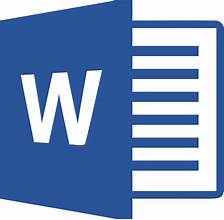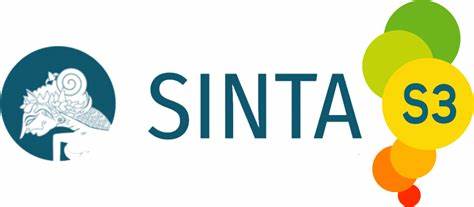GRAMMARLY AS A WRITING TOOL: IMPROVING STUDENTS’ PERFORMANCE IN ESSAY WRITING
Keywords:
Siswa Sekolah Menengah Pertama; Grammarly; Menulis; Kualitas MenulisAbstract
As writing proficiency is essential for academic success, integrating technology such as Grammarly has gained attention as a potential tool for improving students’ writing skills. This study investigates the impact of using Grammarly to enhance the writing quality of ninth-grade Junior High School students. This study used a pre-experimental design at a private junior high school in Sidoarjo. The sample included ICO ninth-grade students. The study used an essay writing test (pretest and posttest) as its research instrument. Since the normality test indicated non-normal data distribution, the Wilcoxon Rank Test was used to compare pretest and posttest scores. The Wilcoxon test yielded a two-tailed Asymp. Sig result of 0.000. Since this value is lower than 0.05, the findings support the hypothesis that Grammarly enhances students' writing quality. The findings from this study reveal a general improvement in students' writing skills across all five evaluated aspects: Content, Organization, Vocabulary, Language Use, and Mechanics. This research also provides recommendations for teachers and students to consider integrating technology such as Grammarly in teaching writing to achieve better learning outcomes.
References
Anh, D. T. N. (2019). EFL student’s writing skills: Challenges and remedies. IOSR Journal of Research & Method in Education, 9(6), 74–84.
Barrot, J. S. (2022). Integrating technology into ESL/EFL writing through Grammarly. Relc Journal, 53(3), 764–768. https://doi.org/10.1177/0033688220966632
Daroina, A., Febriani, W. E., Aulianisa, A., & Fadlia, W. A. (2022, June). Systematic literature review: grammarly as a medium in analyzing grammar for university students. In Conference on English Language Teaching (Vol. 2, pp. 276-289). https://doi.org/10.24090/celti.v2.56
Derewianka, B., & Jones, P. (2016). Teaching language in context. Oxford University Press. 198 Madison Avenue, New York, NY 10016.
Do, Phuong Thi Vu. "Common written error analysis committed by EFL graders. A case study at a secondary school in Vietnam." Pegem Journal of Education and Instruction 13.1 (2023): 1-12. https://doi.org/10.47750/pegegog.13.01.01
Fahmi, S., & Rachmijati, C. (2021). Improving students’ writing skill using grammaly application for second grade in senior high school. PROJECT (Professional Journal of English Education), 4(1), 69-74
Fitria, T. N. (2020). Error Analysis Found in Students’ Writing Composition in Simple Past Tense of Recount Text. ENGLISH FRANCA: Academic Journal of English Language and Education, 4(2 November), 141-160. https://doi.org/10.29240/ef.v4i2.1154
Frankel, J. R., & Wallen, N. E. (2019). How to design and Evaluate. Research in Education. Boston: McGraw-Hill Higher Education.
Ghufron, M. A., & Rosyida, F. (2018). The Role of Grammarly in Assessing English as a Foreign Language (EFL) Writing. Lingua Cultura, 12(4), 395-403. https://doi.org/10.21512/lc.v12i4.4582
Gilakjani, A. P. (2017). A review of the literature on the integration of technology into the learning and teaching of English language skills. International Journal of English Linguistics, 7(5), 95. https://doi.org/10.5539/ijel.v7n5p95
Hadiat, A. W. F. (2022). The Use of Grammarly to Enhance Students’accuracy in Writing Descriptive Text. Journal of English Education Program (JEEP), 9(2), 133–138. http://dx.doi.org/10.25157/(jeep).v9i2.8552.
Harmer, J. (2006). How to teach writing. Pearson Education India.
Huda, T., & Wuda, W. (2019). Grammatical Errors Analysis On EFL Learners’ Writing: A case study at Junior High Islamic Boarding School in Jember. Journey: Journal of English Language and Pedagogy, 2(2), 113–117. https://doi.org/10.33503/journey.v2i2.767
Jacobs, H. L. (1981). Testing ESL composition: A practical approach. English composition program. Newbury House Publishers, Inc., Rowley, MA 01969.
Jelita, K. N., Daud, A., & Masyhur, M. (2023). The Effectiveness of Using Grammarly on High School Students’writing Quality. International Journal of Educational Best Practices, 7(1), 43–55.
Kartika, S. (2017). An analysis of students’ ability in retelling narrative text in written form. English Education: Jurnal Tadris Bahasa Inggris, 10(1), 104–118. http://dx.doi.org/10.24042/ee-jtbi.v10i1.878
Ohta, R., Plakans, L. M., & Gebril, A. (2018). Integrated writing scores based on holistic and multi-trait scales: A generalizability analysis. Assessing Writing, 38, 21–36. https://doi.org/10.1016/j.asw.2018.08.001
Parra G., L., & Calero S., X. (2019). Automated Writing Evaluation Tools in the Improvement of the Writing Skill. International Journal of Instruction, 12(2), 209-226. https://doi.org/10.29333/iji.2019.12214a
Suhartini, V. T. (2016). An analysis of narrative texts in textbooks used by eighth grade students (Systemic functional linguistics perspective). Journal of English and Education, 4(2), 115–123.
Syapitri, O., Herlina, H., & Hermansyah, H. (2023). The Implementation of Grammarly Application as a Tool to Improve Students’ Writing Ability. Jurnal Pendidikan Bahasa, 12(1), 21–33. https://doi.org/10.31571/bahasa.v12i1.4365
Toba, R., Noor, W., & Sanu, L. (2019). The Current Issues of Indonesian EFL Students’ Writing Skills: Ability, Problem, and Reason in Writing Comparison and Contrast Essay. Dinamika Ilmu, 19(1), 57-73. https://doi.org/10.21093/di.v19i1.1506
Downloads
Published
Issue
Section
License

This work is licensed under a Creative Commons Attribution-ShareAlike 4.0 International License.
The author is responsible for acquiring the permission(s) to reproduce any copyrighted figures, tables, data, or text that are being used in the submitted paper. Authors should note that text quotations of more than 250 words from a published or copyrighted work will require grant of permission from the original publisher to reprint. The written permission letter(s) must be submitted together with the manuscript.




